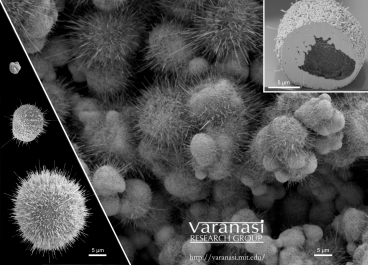A research team headed by Kripa Varanasi, who is the Assistant Professor of Mechanical Engineering at the Massachusetts Institute of Technology, has discovered that sintering of copper particles in air resulted in the formation of bristles growing outward. This process led to a hollow in the middle of the particles.
 Copper particles
Copper particles
Sintering is a process, through which metals in the form of powder are converted to the necessary shape and then heated in vacuum in order to bind them together. Though previous research programs have proven the growth of these bristles or nanowires on copper particles, this research is the first program to observe the particles in various sizes ranging from microscopic size to nanoscopic size. It has been found out that copper particles below a certain size have the ability to sinter, while particles of larger size form nanowires.
These findings, which have been published in RSC Nanoscale, might be instrumental in managing the flow of heat in thermal processes and cooling microprocessors or boilers in power plants. They can also be used in geothermal engineering, which is essential for creating renewable energy. The research team is also in the process of using the same method on other materials such as zirconium, which is at present used in cladding fuel rods located in nuclear reactors. Since it can improve the flow of heat, it can directly enhance the efficiency of the reactor. The research program was funded by the National Science Foundation graduate research fellowship, MIT Deshpande Centre and the MIT Energy Initiative.